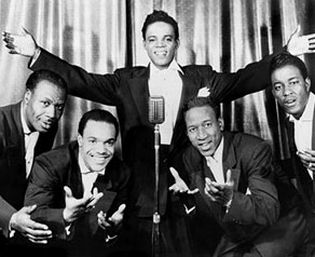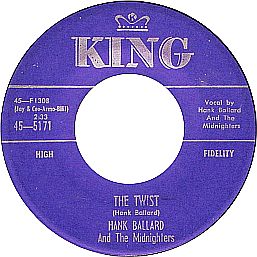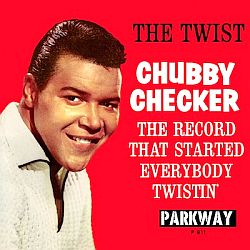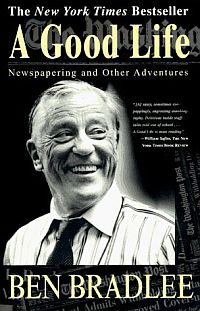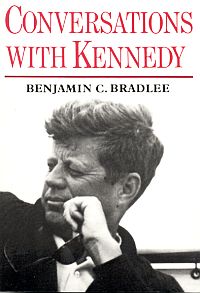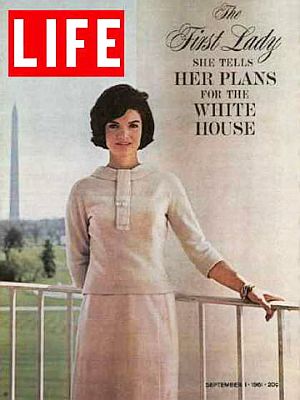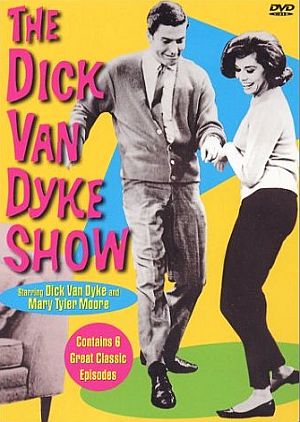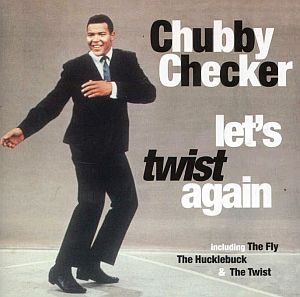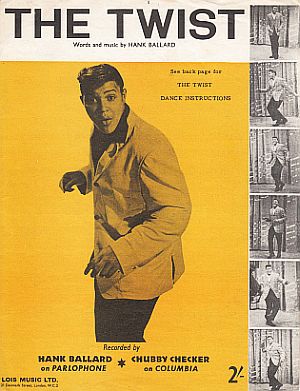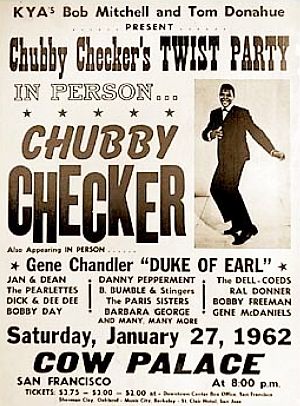The year 1960 marked the election of the nation’s youngest president, John F. Kennedy, at age 43. It was also the year when a national dance craze of that era, known as “The Twist,” first came on the scene. And as it happened, “Mrs. JFK” – first lady, Jacqueline Bouvier Kennedy – would become curious about The Twist, would learn how to do the new dance and its variations, would teach other family members the dance steps, and would incorporate The Twist into the White House party scene. In her role as First Lady, as national hostess and cultural leader, Jackie Kennedy was quite on top of the arts and music scene of her day, and The Twist, it seems, would not be left out. But before exploring Jackie’s role in the new dance, a little background on how the song and dance came about.
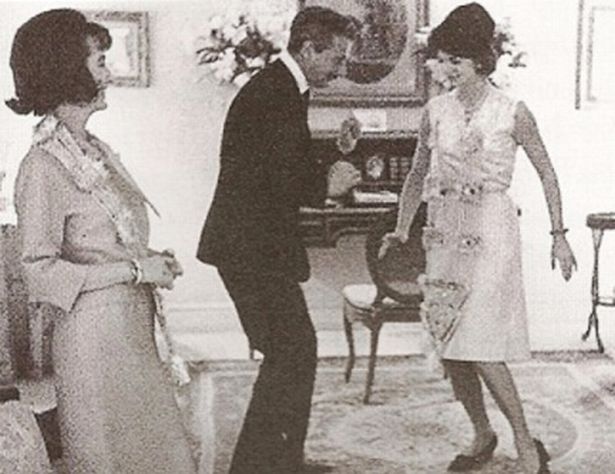
1962: Jackie Kennedy dancing the Twist with her designer, Oleg Cassini, in the London home of her sister, Princess Lee Radziwill, left. Cassini was also involved with a New York nightclub where the the Twist was popular. Photo, Benno Graziani.
The Twist
In 1958, Hank Ballard, an African American rhythm and blues (R&B) artist, wrote a song named “The Twist.” Ballard was the lead singer with “Hank Ballard and the Midnighters,” an early 1950s group that had become known in R&B circles for several bawdy songs that had done quite well on the R & B music charts. But Ballard’s “The Twist,” first recorded in early 1958 by Vee-Jay records in a Florida studio, wasn’t released then, as Ballard and group were in the midst of a label change. King Records then became the group’s label, issuing “The Twist” in 1959 on the “B side” of another of their recordings – “Teardrops On Your Letter.” B-side recordings were less likely to be played by radio DJ’s. And sure enough, after its release, “Teardrops” rose to No. 4 on the R&B chart while “The Twist” rose to No. 16, R&B.
Meanwhile, in Philadelphia, Pennsylvania, Dick Clark, host of the then popular American Bandstand TV dance show, had heard that “The Twist” was getting some attention in Baltimore. Black teenagers there had heard the new song at a Hank Ballard & Midnighters performance, and a new dance was evolving with it, also starting to appear on a Baltimore TV dance show, The Buddy Dean Show. Bernie Binnick, a Dick Clark business associate in Swann Records, along with Freddy Cannon, a Swann recording artist, saw the Baltimore kids dancing the new Twist. Binnick picked up Ballard’s 45 rpm record and later played it for Clark back in Philadelphia, who reportedly, at first, found it too bawdy and too risky for his show. Clark at the time was facing “payola” inquiries, so he was being extra careful. Ballard and his group had incorporated some pretty risque dance moves as they performed their version of The Twist on stage, and Clark was aware that a couple of their earlier songs had been banned in a few places due to their lyrics.
Still, by the spring of 1960, Clark was looking for a cleaned-up version of the Twist and a new recording artist that he might be able promote on Bandstand. However, Swann Records’ owner Bernie Binnick, wasn’t interested in recording the song. But another Philadelphia label that Clark became involved with, Cameo-Parkway, was.At the time, one of Cameo-Parkway’s new artists was Ernest Evans, who had been working as a chicken plucker in a dead-end job before he was discovered. Evans soon became “Chubby Checker”– a name suggested by Dick Clark’s wife – and was the designated candidate to record a new version of “The Twist.” Checker had already recorded a few songs for Cameo-Parkway, but was selected for the Twist primarily because his voice sounded much like Ballard’s.
Dance steps for the new version of the Twist were also revised, with less pelvic action than what Ballard and company had done on stage, or what the Baltimore kids were doing in their dancing. A simplified, open style of dancing with the couple standing apart was devised, swinging their arms from side-to-side across their torso, with legs and lower body moving opposite the swinging arms – ergo, “the twist.”

1960. Dick Clark of American Bandstand receiving instruc-tions from Chubby Checker on how to do The Twist.
In late September 1960, Chubby Checker appeared on the regular American Bandstand weekday show with Dick Clark, who then described the new dance as “a pretty frightening thing… sweeping the country.”
As John A. Jackson would later write in his book on Dick Clark: “It suddenly became socially acceptable for dancers to move their hips in public,” also quoting one Bandstand dancer from that era saying the twist “changed the way that we danced from that point on.”
The Twist would also prove to have staying power, and for a few years would touch off something of a mini “Twist economic boom” with more songs, merchandise, promoters, and artists jumping on the Twist bandwagon. Older adults would catch Twist fever as well, following the teenagers a year or so later. As a result, The Twist would become the only song to reach the No. 1 spot on the Billboard pop chart in successive years — 1961 and 1962. Chubby Checker, meanwhile, would enjoy a long career of Twist-related personal appearances, films, and other business opportunities.
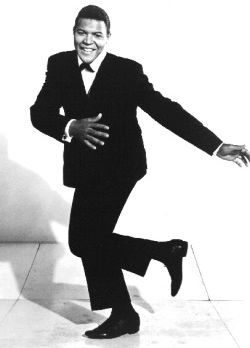
Chubby Checker doing “The Twist.”
Twisting Venues
First lady Jacqueline Kennedy, a stylish, upper-class young woman known for her interests in fashion, the arts, and culture, became involved with the new Twist dance, and appears to have played a role in bringing it to the White House. It may well surprise some who associate Jackie Kennedy with the “high arts” of symphony, ballet, and classical art and architecture to learn that she involved herself with the more “proletarian arts” of the street, such as the Twist. Yet Jackie Kennedy, considered a bit snobbish in some arenas, and not always enamored with the grittier side of politics for example, appears to have had quite an eclectic outlook when it came to art, in whatever form.
In the first year of the Kennedy Administration, in March 1961, a New York dance band conducted by Lester Lanin played a version of the Twist in the East Room of the White House. Also that evening, it was later reported, that Andrew Burden, age 26, who had a reputation for doing “the best Twist in New York society,” gave a demonstration of the new dance at White House reception as JFK looked on. The press reported the president was merely an amused spectator. At least publicly, the Twist at the time was regarded in some quarters as not quite acceptable for a White House social function – not quite “presidential.” In fact, outgoing president, Dwight D. Eisenhower, who left office in early 1961, called the Twist, “vulgar.” Yet, the Kennedy White House would be more accepting – after all, this was a president who had championed national vigor and new frontiers, setting some expectation for change.
The Peppermint Lounge. In New York, meanwhile, various celebrities and other glitterati by this time had been doing the Twist at a place called The Peppermint Lounge, a small discotheque at 128 West 45th Street in Manhattan. Among the notables seen “twisting away” there in 1961 were Truman Capote, Noël Coward, Audrey Hepburn, Norman Mailer, Marilyn Monroe, Greta Garbo, Judy Garland, Frank Sinatra, and others.
The twist dancing there was setting the pace, not only for the new dance, but also in a way, for national social mores as well. For with the Twist, couples danced apart; ladies no longer needed to follow the man’s lead. So, a bit of a social revolution was occurring, and as some saw it, the beginnings of the 1960s sexual revolution as well. And the Peppermint Lounge was where it was all happening. It became the place to be; the trendsetting place for the “in crowd.” Reportedly, Jackie Kennedy, with her sister, Princess Lee Radziwil, also made a trip to the Peppermint Lounge.
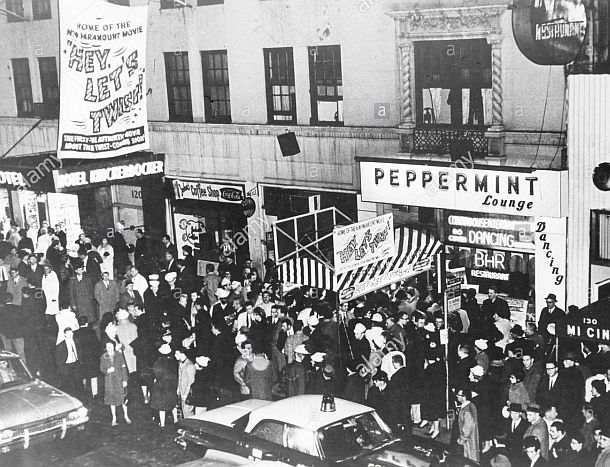
1961: The Peppermint Lounge discotheque at 128 West 45th St., New York, where “The Twist” dance was all the rage, and where Joey Dee & The Starliters had the No. 1 hit, “The Peppermint Twist.” (Alamy, stock photo). Click for Joey Dee album CD.
The house band at the Peppermint Lounge, Joey Dee and the Starliters, would later have a national hit with their song, “The Peppermint Twist,” which became No. 1 for three weeks in January 1962. The group would have a few albums riding on the coattails of twist mania, and would also appear in an least one film, Hey, Let’s Twist. A Joey Dee paperback on the Twist also appeared, among others.

AP news story, December 23, 1961.
On November 11th, 1961, there was a White House dinner dance in honor of Jackie’s sister, Princess Lee Radziwill, who had married Polish émigré nobleman, Prince Stanislas (“Stash”) Radziwill. Fiat auto executive, Gianni Agnelli and his wife, Marella, were also honorees at this affair. It was a dinner dance for about 80, with Lester Lanin’s band providing the music and Oleg Cassini introducing the Twist. The champagne flowed until 4 a.m., according to one account. But Press Secretary Pierre Salinger, still protecting the White House from disapproving social critics, denied the Twist had been part of the evening’s festivities.
At a Thanksgiving Day gathering of Kennedy family members at Hyannis Port, Massachusetts in November 1961, Jackie, according to Rose Kennedy, gave a demonstration of the dance to interested family members as Joan Kennedy played piano. Back in Washington, a month later, Jackie Kennedy appears to have played a role in granting permission to redecorate meeting rooms in the Pan American Union building into a “look-alike” Peppermint Lounge for a late December 1961 party. The Council of the Organization of American States had been meeting in those rooms earlier that day. Among some of the VIP onlookers attending that function and watching those on the dance floor, were Jackie’s mother, Mrs. Hugh D. Auchincloss; Time-Life publisher Henry Luce and his wife Clare Boothe Luce; and U.S. Senator J. William Fulbright.
Ft. Lauderdale. There had also been a few news reports of the First Lady doing The Twist at local nightspots in Fort Lauderdale, Florida during a late December 1961 visit to the area. As would become custom in those years, the Kennedy family during the December-January holiday, would stay in Palm Beach, not far away.
Regarding the Jackie sightings, however, Kennedy press secretary, Pierre Salinger, firmly denied reports of the First Lady twisting at local nightclubs, and assured inquiring press such sightings were surely the result of mistaken identity.
Still, at least one wire story appeared in some newspapers with witnesses claiming they saw Jackie at one club, The Golden Falcon Lounge. At the time, JFK’s father had taken ill, and the President was reportedly “furious” over the fact that the wire story had run.
White House Parties. By early 1962, it was being reported that the First Lady had begun holding occasional “Twist parties” at the White House, and that Jackie, in particular, was reportedly “a wicked Twister,” according to one friend who saw the 31-year old First Lady doing her version of the dance at an East Room event.
Betty Beale, a society reporter then with The Washington Star newspaper, filed an account of a February 1962 White House party where the First Lady and Secretary of Defense, Robert MacNamara did a bit of twisting.
 February 1962: One of the newspaper stories reporting on Jackie Kennedy and ‘The Twist’ at the White House. |
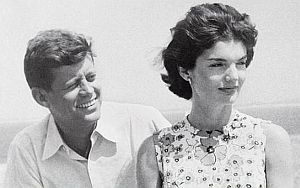 1960: JFK & Jackie Kennedy. Photo, Frank Fallaci. |
Beale’s report, in part, ran as follows:
“…The Twist has truly arrived! From here on it has no place to go.”
…The lady who did it with Secretary of Defense Robert McNamara at the White House dinner dance last week [Feb 1962] was none other than Jacqueline Kennedy. And according to the other guests, ‘She does it beautifully!” and ‘He [McNamara] was terrific.’
Anyone who still had any misgivings about the current dance craze simply hasn’t seen it done the way Mrs. Kennedy, who looked lovely in a long white satin sheath, and Secretary McNamara, frequently called ‘the brain’ of the cabinet, performed it. It was rhythmic, fun and peppy, and more restrained than the good old Charleston which doesn’t seem to shock anyone.
The third White House dinner dance, this one for the Stephen Smiths (brother-in-law and sister of the President), wowed the 100 guests until morning. Jacqueline Kennedy, who danced almost every dance, withdrew and retired at 3 a.m. But the President, who had disappeared from time to time for consultations in his private apartments upstairs with some of his own officials present, kept it going to 5 a.m. when he went to say goodnight to his last guests…
As usual, Lester Lanin and his orchestra played in their red coats. Lester, who is humble and thrilled to be the one invited to play each time, gives a better picture of the atmosphere at these black tie presidential parties. Here he describes it in his own words:
‘They are as cheerful and as gay and as dignified a party as you will find from coast to coast. Everybody is having fun but everyone is dignified. The White House waiters all say they have never seen such beautiful parties there.’
‘Everybody is on his good behavior, but he (the president) makes you relax…. He doesn’t dance often and he doesn’t hold them close. He talks when he dances, and he only dances a couple of minutes, then he takes another partner later’…
There were also smaller parties occasionally held in the private quarters of the White House — all dignified gatherings, of course. But at least at one of the larger parties, Phil Graham, editor of The Washington Post, split his pants during some vigorous twisting.
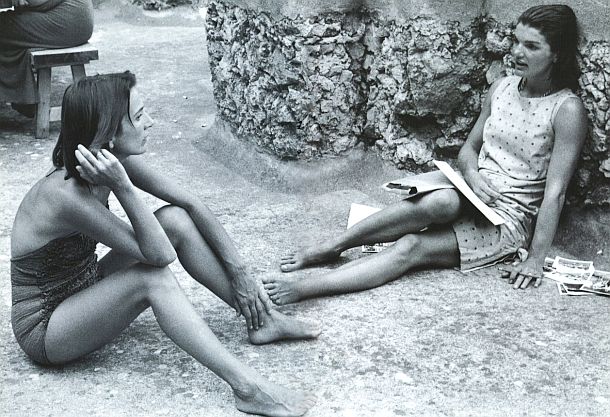
Summer 1962: Jackie Kennedy with her sister, Lee Radziwill, on the Amalfi Coast of Italy during vacation, where reportedly, at Italian nightspots, she danced the Twist and learned the Watusi. Photo, Benno Graziani.
Italy’s Amalfi Coast. Jackie Kennedy was also reported to have partaken in the Twist, and its dance variations, while vacationing along Italy’s Amalfi Coast during the summer of 1962. By that time, however, the original version of the Twist was morphing into new dance variations, such as the Watusi. Still, Jackie reportedly learned some new variations of the Twist during her visits to Italian nightspots. Mother-in-law Rose Kennedy would later report in her diary that when Jackie arrived at the family’s Cape Cod compound following her vacation in Italy, she taught various family members all the specifics of the new dances.
|
“Bradlee Remembers” Ben Bradlee, former Newsweek and Washington Post editor, was a friend and neighbor to the Kennedys both before and during their White House years. What follows are a couple of excerpts from Bradlee’s books on the White House parties. _________________________ …[T]he Kennedys were changing the face and the character of Washington. Nothing symbolized this change more than the parties, for the Kennedys were party people. He loved the gaiety and spirit and ceremony of a collection of friends, especially beautiful women in beautiful dresses. They liked to mix jet setters with politicians, reporters with the people they reported on, intellectuals with entertainers, friends with acquaintances. Jackie was the producer of these parties. Jack was the consumer. They gave five or six dances during their time in the White House, and that’s where it all came together.The crowd was always young. The women were always stylish. And you had to pinch yourself to realize that you were in the Green Room of the White House, and that the chap who just stumbled on the dance floor was no stag-line bum, but the Vice President of the United States, Lyndon Baines Johnson. Sometimes, the very best friends were asked not to come until after dinner… — Ben Bradlee, The Good Life: Newspapering and Other Adventures, 1995. _________________________ …In all the time that we knew him, we saw Kennedy really tight only once [i.e., high on alcohol – “one of the very rare occasions we’ed seen him in that condition”]. The occasion was a small dinner in the family dining room upstairs [at the White House], with only the president, Lee Radziwill, Bill Walton, and ourselves [Ben and Tony Bradlee] present. Jackie was out of town. The “twist” had just hit Washington, or it least it had finally hit Washington, and after dinner Lee Radziwill put Chubby Checker’s records on and gave all the men lessons. The champagne was flowing like the Potomac [River] in flood and the president himself was opening bottle after bottle in a manner that sent the foam flying over the furniture, shouting “Look at Bill go” to Walton, or “Look at Benjy go” to me, as we practiced with the “princess.”… — Ben Bradlee, Conversations with Kennedy, 2014. _________________________ February 14, 1962. At cocktails in the White House with the President, where: “…there was much upbeat reminiscing… – Phil Graham’s ‘twist,’ which had produced a six-inch rip in the seat of his pants as he took his first lesson in the new dance craze from Tony [Bradlee]… the very proper ‘twists’ performed by Jackie with ‘the Guv’ (Averell Harriman) and Bob McNamara…” — Ben Bradlee, Conversations with Kennedy, 2014. ____________________ …We were invited to a birthday party cruise down the Potomac on the Sequoia [presidential yacht] in May 1963… …Kennedy had not learned that the Twist was passé, and kept calling for more Chubby Checker every time the three piece combo played anything else for long… — Ben Bradlee, The Good Life: Newspapering and Other Adventures, 1995. |
JFK’s younger brother, and U.S. Attorney General, Bobby Kennedy, and wife Ethel, were also known for throwing memorable parties at their Hickory Hill home in McLean, Virginia, where on one occasion, Ethel Kennedy reportedly recruited singer/actor Harry Belafonte to teach attending party guests how to do The Twist. And at least one composer, Sonny Thompson, wrote a ditty titled, “Do The Presidential Twist,” which was something of a variation on the Chubby Checker song, with apropos political lyrics and JFK insertions throughout, along with a chorus of, “Come on Baby, lets do the President Twist.”
But during the 1961-62 period, it appears, the imprimatur of Jackie Kennedy’s approval of the new Twist dance contributed to its rise and wider cultural acceptance. Indeed, some say it was more than that. As James Wolcott wrote in October 2007 for VanityFair.com:“First Lady Jacqueline Kennedy was more than an interested bystander. It was she who stamped the presidential seal on the Twist and turned the White House and Hickory Hill… into the Peppermint Lounges of the Potomac. Under her aegis, Washington, D.C., joined New York and Los Angeles to form the power triad of the Twist…”.
Yet, it is also true that the Twist craze had enough commercial impetus behind it – plus the full and free acceptance (and spending) of the burgeoning Baby Boomer youth culture – that it needed little help from the White House.
In the mainstream music world, for example, there were a whole raft of new “twist” songs that came out, many of which were duds, but a few of which became hits. Chubby Checker, for one, had a good run with “The Twist,” which hit No. 1 in 1960 and again in 1962, and also with a succession of other twist songs, including – “Let’s Twist Again” (No. 8, 1961), “Slow Twistin” (No. 3, 1962), “Twist It Up” (No. 25, 1963). Checker also appeared in two films: Twist Around the Clock and Don’t Knock the Twist.
Among other twist-related songs that made it into the Top 40 during the 1962-64 period were: “Peppermint Twist – Part 1” by Joey Dee & the Starliters (No. 1, 1962); “Dear Lady Twist” by Gary “U.S.” Bonds (No. 9, 1962); “Twistin’ U.S.A.” by Danny & the Juniors (No. 20, 1961)”Twistin’ Postman” by the Marvelettes (No. 34, 1962); “Twistin’ the Night Away” by Sam Cooke (No. 9, 1962); “Twist and Shout” by the Isley Brothers (No. 17, 1962); “Bristol Twistin` Annie” by the Dovells (No. 27, 1962); “Twist and Shout” by the Beatles (No. 2, 1964).
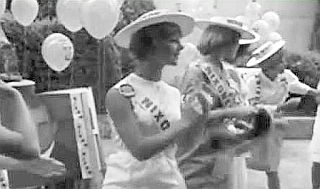
1962: The ‘Twisting Nixonettes’, in action at a Pomona County Fairgrounds rally for California gubernatorial candidate Richard M. Nixon, may have signaled the end of the twist as cutting edge.
But the kiss of death for the Twist in cutting-edge culture, some believe, was it’s assimilation by the older generation. By the time it reached the White House, according to this view, it was already passé. If not then, it was when the dance entered the realm of political campaigning that its final end became clear.
None other than Richard Nixon, campaigning for governor of California in 1962, was seen at a Pomona County Fair Grounds rally that fall with a group of young women dancers who were called the “Twisting Nixonettes.”
During and following the Twist craze of the early 1960s, there came a succession of other dance songs – the Pony, the Fly, the Swim, the Hitchhike, the Huckebuck, the Loco-Motion, the Mashed Potatoes, the Hully Gully, and others. Yet none of these ever rose to the same level of fame and fortune as The Twist. The nation, it seems, then emerging from a more conservative time, was especially receptive to new forms of expression, and the Twist – in dance, song and rhythm, along with sense of the freedom it exhibited – simply fit the zeitgeist of the moment.But the Twist has also secured its place in history. On March 21, 2013, the U.S. Library of Congress included Chubby Checker’s version of “The Twist,” along with 24 other songs and recordings, for preservation in the National Recording Registry — recordings selected for their cultural, artistic and historic importance to the nation’s aural legacy.
Other pages of possible interest at this website may include: “Noteworthy Women,” with 40 additional story choices on historic women, and “Kennedy History,” featuring mostly JFK-related stories. See also the “Annals of Music” page for additional song profiles, artist biographies, and other music-related history. The “Politics & Culture” page offers additional stories in that arena. Thanks for visiting – and if you like what you find here, please make a donation to help support the research and writing at this website. Thank you. – Jack Doyle
|
Please Support Thank You |
____________________________________
Date Posted: 20 June 2016
Last Update: 1 May 2019
Comments to: jdoyle@pophistorydig.com
Article Citation:
Jack Doyle, “Jackie & The Twist: First Lady History,”
PopHistoryDig.com, June 20, 2016.
____________________________________
Sources, Links & Additional Information
Sarah Bradford, America’s Queen: The Life of Jacqueline Kennedy Onassis, Penguin, 2001.
Jacqueline Kennedy and Michael Beschloss, Jacqueline Kennedy: Historic Conversations on Life with John F. Kennedy, Hachette Books, 2011.
“Chubby Checker,” in Holly George-Warren and Patricia Romanowski (eds), The Rolling Stone Encyclopedia of Rock & Roll, New York: Rolling Stone Press, 3rd Edition, 2001, p. 168.
Jim Dawson, The Twist: The Story of the Song and Dance That Changed the World, Faber & Faber, 1995.
John A. Jackson, American Bandstand: Dick Clark and the Making of a Rock ‘n’ Roll Empire, New York: Oxford University Press, 1997.
“The Twist (song),” Wikipedia.org.
“Hank Ballard,” in Holly George-Warren and Patricia Romanowski (eds), The Rolling Stone Encyclopedia of Rock & Roll, New York: Rolling Stone Press, 3rd Edition, 2001, pp. 43-44.
“Hank Ballard,” Wikipedia.org.
Tom Moon, “Singin` and Swingin` With Hank Ballard and the Midnighters,” 1,000 Record-ings to Hear Before You Die, New York: Workman Publishing, pp 42–43.
Marylin Bender, “Cassini Faces New Frontier in Fashion With Few Regrets for Past Designs; Designer Chosen by First Lady Also a Showman,” New York Times, March 15, 1961
Daz and Richard Harkness, “A New First Lady, a New Mood; Mrs. Kennedy Is Bringing Changes to Her New Home — Just like Many of Her Predecessors,” New York Times, April 23, 1961.
Jonathan Takiff, “1960: Year of the Novelty Record,” Philly.com, July 9, 2010.
Dorothy McCardle, “Peppermint Peps Up Party,” Washington Post, Times Herald, Dec. 23, 1961.
“Peppermint Lounge,” Wikipedia.org.
Associated Press (Fort Lauderdale, Fla), “Dance Report On First Lady Is Said False,” Spokane Daily Chronicle, December 23, 1961, p. 1.
“White House Denies Jackie Danced Twist,” Los Angeles Times, December 24, 1961, p. A-1.
“Story First Lady Did Twist Badly Twisted,” Washington Post, Times Herald, December 24, 1961, p. A-4.
Associated Press (New York), “Oleg Cassini Steals Show In The Twist,” The Fort Scott Tribune, January 10, 1962.
“Kennedys Give a Party; Entertain 100 at Dinner-Dance in the White House,” New York Times, February 10, 1962.
Winzola McLendon, “Cream of Capital Society Takes a Whirl at the Twist,” Washington Post, Times Herald, February 12, 1962, p. F-1.
Drew Pearson, “They Twisted at the White House,” Washington Post, Times Herald, February 17, 1962, p. B-13.
Marie Smith, “Kennedy Kavort May Angle Out Twist; State Dinner,” Washington Post, Times Herald, February 18, 1962, p. F-1.
David Lawrence, “Jackie’s Twisting With Mac Puts White House ‘on Move’,” Pittsburgh Post-Gazette, February 22, 1962, p. 5.
David Lawrence, “Twist Arrives At The White House,” Sarasota Herald-Tribune, February 22, 1962, p. 6.
“Italians Awaiting Mrs. Kennedy; Big Reception Is Set at Ravello Today for First Lady,” New York Times, August 8, 1962.
Benjamin C. Bradlee, Conversations with Kennedy, W. W. Norton & Company, 1984.
Ben Bradlee, A Good Life: Newspapering and Other Adventures, Simon & Schuster, 1995
Dave Haslam, “What the Twist Did for the Peppermint Lounge,” London Review of Books, Vol. 22 No. 1, January 6, 2000, pp. 27-30.
Melanie Eversley, Cox News Service, “Can Bush Boogie? New President May Not Waltz Through His Inaugural Balls,” Lakeland Ledger, January 19, 2001.
Carl Sferrazza Anthony, The Kennedy White House: Family Life and Pictures, 1961-1963,
Simon and Schuster, 2002.
Sally Bedell Smith, “Private Camelot,” VanityFair.com, May 8, 2004.
Sally Bedell Smith, Grace and Power: The Private World of the Kennedy White House, Random House, 2004.
James Wolcott, “A Twist in Time,” VanityFair.com, October 31, 2007.
“When First Ladies Dance: Before Michelle Obama’s “Dougie” Was Jackie Kennedy’s Twist, Betty Ford’s Bump, Eleanor Roosevelt’s Glide and…,” CarlAnthonyOnLine.com, May 6, 2011.
John Johnson Jr, Op-Ed, “The Twist: The Swivel That Shook the World. In the Dance Craze Were the Seeds of Everything That Became the ’60s,” Los Angeles Times, April 21, 2013.
“Schulenberg’s Page: New York, Part X” (Peppermint Lounge), NewYorkSocialDiary .com, May 21, 2015.
Wayne Robins, A Brief History of Rock, Off the Record, Routledge, March 2016.
Sam Kashner, “The Complicated Sisterhood of Jackie Kennedy and Lee Radziwill,” Vanity Fair.com, April 26, 2016 8:00 pm
“Politics; Nixon, Brown Launch Campaigns…1962″ (includes“Twisting Nixonettes,” in part), BritishPathe.com.
________________________
